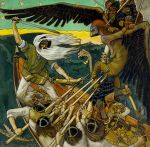For all those worried about the fate of the UK’s provincial museums, spare a thought for their counterparts in Finland. With a population of less than five and a half million spread across 130,000 square miles, Finland is the most sparsely populated country in the European Union. For museums outside Helsinki, this presents a significant challenge. But it’s not insurmountable, as demonstrated by the admirable Serlachius Museums in Mänttä, a small town 150 miles north of the capital.
Gösta Serlachius Museum
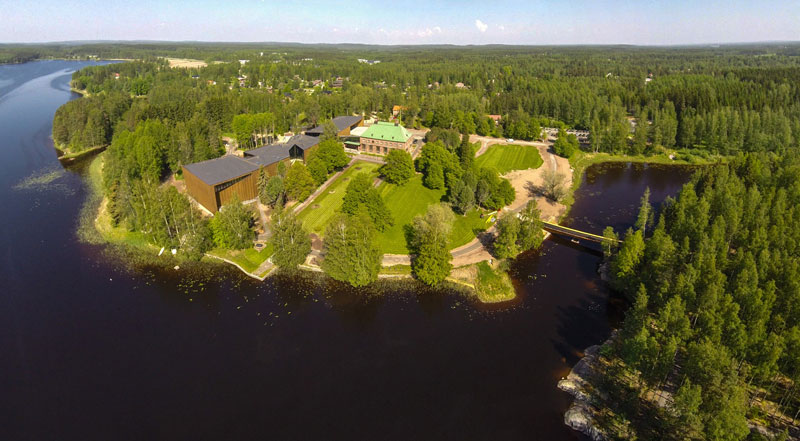
The history of Mänttä is bound up with that of the Serlachius family. Dominating much of the town is the Metsä factory: the original building, which still stands to the east of the complex, is an ever-so-slightly grand groundwood mill built by Gustaf Adolf Serlachius in 1869. Today, its red brick walls crumble at the corners and green tendrils push through the cracks.
From the profits of this factory art has sprung. Gustaf Adolf was a major patron of Finnish artists like Akseli Gallen-Kallela. His nephew founded the Gösta Serlachius Fine Arts Foundation in 1933, which today maintains the Serlachius Museums. This bestows one major advantage over other comparable institutions in Finland: money. The foundation’s annual acquisition budget alone is €436,000 (around one third of the acquisition budget of the National Galleries of Finland). In 2011, the museum committed €19.5 million to a major extension of the old manor house. Following an open, blind competition, the winners were announced as Barcelona-based architects MX_SI – something of a surprise even to the competition’s judges, who were certain the proposal they’d selected was by a Finnish firm. The result is a big, flexible space that adroitly serves the needs of artists, staff and visitors alike. It has garnered widespread international acclaim and helped put Mänttä on the map. It is also remarkably beautiful and sensitive to its surroundings – in short, everything architecture of this nature ought to aspire towards.
Serlachius Museum Gösta
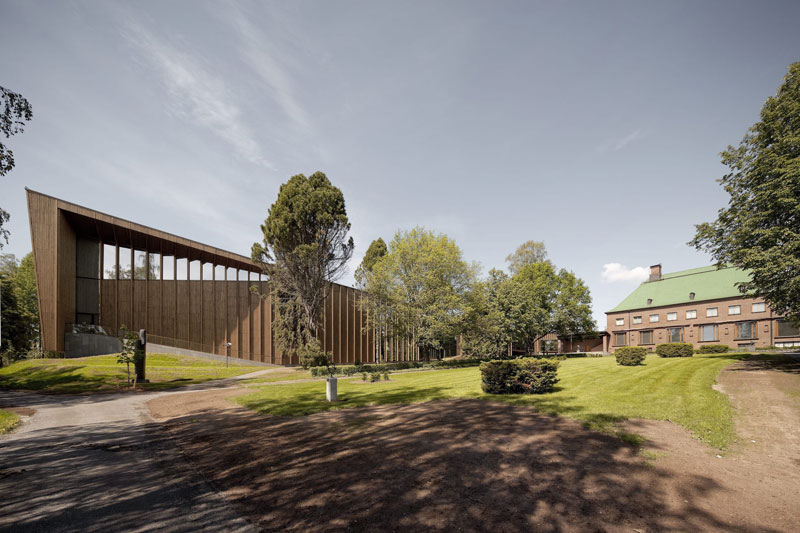
As its traditional industries decline, Mänttä has sought to reinvent itself through art. Pekilo – a converted former factory – now plays host to the Mänttä Art Festival. The festival was launched in 1993 and is now an annual fixture. This year’s instalment (12 June–31 August) is curated by Anssi Kasitonni. At the same time the Serlachius Museums are hosting a major exhibition of work by Mark Wallinger (28 May–9 October).
In advance of that, the institution has opened an excellent exhibition about art and science that deftly mixes work by some of Finland’s most interesting contemporary and historical artists with significant international figures like Katie Paterson, Greg Mort, Agnes Meyer-Brandis, and John Byrne. (I should mention, at this point, that the exhibition includes work by Crystal Bennes, my wife.)
Installation shot: ‘The Starry Skies of Art’ at the Gösta Serlachius Museum. Photo: Crystal Bennes
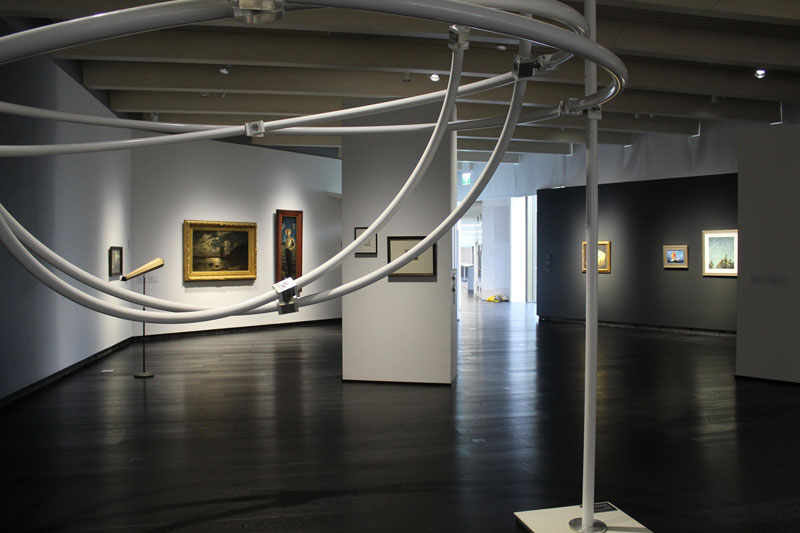
Curated by Helena Sederholm, Professor of Art Education at Aalto University, and Markus Hotakainen, an eminent science writer, ‘The Starry Skies of Art’ responds tactfully to the museum’s own collection. Just as MX_SI’s extension provides a physical bridge between old and new, so the exhibition’s curators provide an artistic one, via the inclusion of Akseli Gallen-Kallela’s On the Way to Tuonela (1888). Where most readings of this work would focus on its symbolism (Tuonela is the Finnish version of hell in the national epic, Kalevala), Hotakainen tells me that the constellations picked out in gold paint are astronomically accurate. What does this tell us about Gallen-Kallela’s interests? Personally, I feel his works from life have always been much more convincing than his nation-building Kalevala scenes. It’s worth comparing the stars here with those in, say, The Defence of the Sampo (1896) by which time Gallen-Kallela has entered full-on symbolist mode. The knowledge that the sky in Tuonela is painted from the real thing helps to show how Gallen-Kallela’s approach to painting changed across his career – and not necessarily for the better.
Hotakainen offers another perceptive reading of a second historic work – Oulu by Moonlight (1867), an initially underwhelming townscape by Ferdinand von Wright. By paying close attention to the painting’s light source and sundry other subtle clues (what is a pair of figures doing out so late at night in 19th-century Oulu?) Hotakainen has been able to propose a precise date for the scene depicted: the lunar eclipse of 14 September 1867. While at first this reading may seem irrelevant (compared to interpretations of meaning and symbolism, technique, composition, etc.), in fact it does make one view the work in, ahem, a new light. Suddenly, its eerie grey-green pallor makes sense. We share the wonder of the figures in the foreground.
Oulu by Moonlight (1867), Ferdinand von Wright.
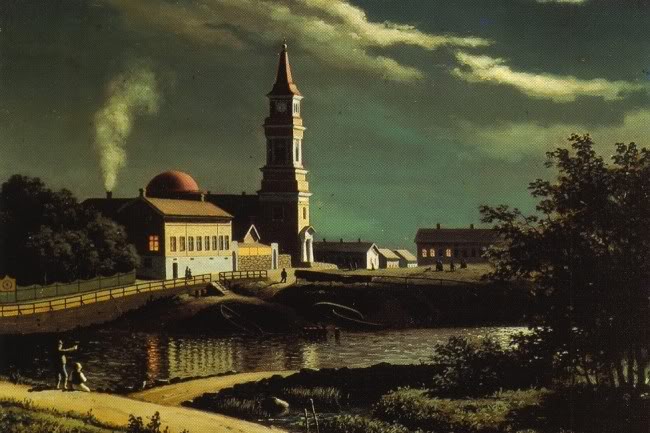
This demonstrates the curators’ second major success: an effortless intermingling of ideas from both art and science. There is scientific interpretation of art, artistic appropriation of science – courtesy of Tommi Grönlundin and Petteri Nisusen’s Antigravity Model (2015) – and work that blurs the two, in the form of Andy Gracie’s ongoing fruit fly breeding programme, Drosophila Titanus.
My personal highlight, however, is Dying Star (2016) by Petri Eskelinen. Inside a room of total darkness, we are confronted by a galaxy of tiny phosphorescent smudges. It reminds me, oddly, of the dancing colours of Georges von Swetlik’s A Woodland Pool (1933), part of the Serlachius permanent collection. As you stand and wonder about scale and distance, all of a sudden a blinding light reveals the trick: the smudges are the sums and jottings of sundry scientists seeking to identify the truths of the galaxies. In that moment, the universe is revealed to be made of maths, of information. Whether this is objective truth or subjective judgement remains open. So too does the question of whether, when it comes to theoretical physics (and art for that matter), we can ever know the difference between the two.
Installation shot: ‘The Starry Skies of Art’ at the Gösta Serlachius Museum.
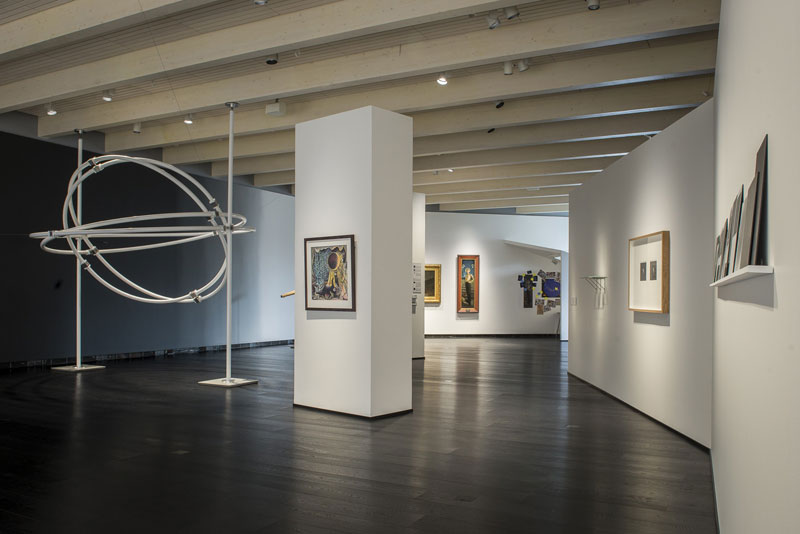
‘The Starry Skies of Art’ is at the Gösta Serlachius Museum until 7 January 2017.
